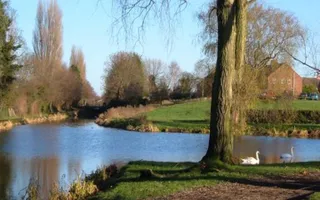The oldest surviving iron aqueduct in the world can be found at Longdon-on-Tern, northwest of Wellington. Also near Wellington is Wappenshall Junction, with a rare survival of an interchange wharf and warehouses, now the home of the Shrewsbury and Newport Canals Trust, which has plans to restore the canal to its former glory. Various short sections are still in water, including at Norbury Junction, the eastern terminus of the canal.
The history
The Shrewsbury & Newport Canals comprise two very different waterways. The western section was the Shrewsbury Canal, opened in 1797, which went from the coalfield in what is now the town of Telford to the county town. This was a tub-boat canal, designed for boats 6ft wide, 20ft long and 3ft draught. Its main engineering features were: the Trench Incline, which raised boat 75ft to the summit level and continued working until 1921; Longdon-on-Tern Aqueduct; Berwick Tunnel, which was the first tunnel of a significant length which had a towpath through it; and eleven guillotine-gated locks, remains of two of which survive at Hadley Park, Telford.
The eastern section, from Norbury Junction to Wappenshall Junction, opening in 1835, was a branch of the Birmingham & Liverpool Junction Canal. Thomas Telford's last canal has superb stonework, which can be particularly admired at Forton, with its aqueduct and skew bridge, and at Wappenshall Junction.
With the opening of the Newport Branch, the section of the Shrewsbury Canal from Wappenshall Junction to Shrewsbury was modified to take conventional narrowboats.
These canals became part of the Shropshire Union in the late 1840s and shortly afterwards were leased to the London & North Western railway.
Trade reduced following the opening of the parallel railway line in 1848, though much iron ore and limestone continued to be carried during the rest of the 19th century. The canal was closed in stages during the 20th century.







